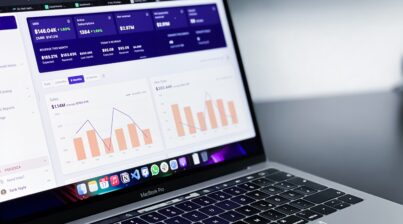HR needs to tell better data-driven stories because the human brain is wired for stories. Jonathan Haidt, author of The Righteous Mind, explains that the “human mind is a story processor, not a logic processor.” His declaration is backed by experiments from Leda Cosmides and John Tooby, who found that the Wason Selection Test, a logic puzzle, can be solved by fewer than 10% of participants when presented as a logic puzzle. However, when the same puzzle is presented as a story, 70-90% of participants are able to successfully complete it.
As social creatures, this makes sense. Our ability to interact, form bonds, cooperate, and communicate with other humans is essential to our survival. This is something that professional storytellers use to their advantage every day, whether they are journalists, marketers, or even data scientists. Expert storytellers know that humans remember information 22 times better when delivered through stories than when delivered through other methods, and they know that stories keep their audience more engaged.
Historically, Human Resources has not been a data-driven department. However, with the rise of data analytics, HR is becoming increasingly data-focused. But if we are going to make that data work for us, we have to become better at telling data-driven stories. That isn’t something that necessarily comes naturally to us, but it is something that we can learn to do better. To use data effectively, we should use elements from storytelling to make our data more accessible to our audience and more actionable for our companies’ goals.
Below are five steps for becoming better storytellers with data.
- Know your data. Before you can find the story your data is telling, you must gather data, study it, and filter out what is unnecessary. Determine which data points are related to one another and consider those together. You should be grouping like things and separating out unlike things. At this point, you can start to discover your data’s narrative.
- Identify the theme. A story’s theme is the big idea it is communicating to the audience. Steve Rayson of BuzzSumo writes that there are five core narratives for telling stories with data: trends, rank order, comparisons, surprising or counterintuitive data (such as data that challenges people’s usual thinking), and relationships (such as correlations, causations, or predictions). Importantly, these narratives all focus on examining data points in conjunction. No data is important on its own but gains importance when it’s fit into a larger context. For instance, if your company’s sales are lagging, then that information only becomes helpful if other data helps explain why sales lag.
- Use visuals. When we say “story,” you may think of words on a page, but a better comparison might be a picture book. Numbers can be difficult to process since most people can’t visualize large numbers accurately, but visuals such as charts, graphs, diagrams, maps, and infographics can communicate numbers in a way that makes them easier to process. Visuals also communicate information much more quickly; in fact, humans process visual content 60,000 times faster than text. While there are many options for creating winning visuals, using your hr analytics dashboard is often the easiest and fastest way to do this. The data will already be in your dashboard and you’ll have dozens of charts and graphics designed specifically for the kind of data you are working with.
- Consider your audience. By the time you have studied your data, found a theme, and begun constructing visuals, you’ll be an absolute expert with your data, but that doesn’t always mean that your audience is. It’s important to keep in mind your audience’s skill level, familiarity with the subject, and time constraints so you can tailor your story for their understanding. A beginner on the subject, such as a new employee, may need more explanation and less jargon to be able to follow your ideas. A manager who works in your department will need less explanation, but more detail to understand the specifics and know how to take action with the data. An executive will be much further removed from the information and less likely to work with it directly. He or she will also have less time to hear details and be more focused on the conclusions you’ve reached with your data.
- Make your story worth telling. Every story should have a clear conclusion. That conclusion might a new take on certain issues within the department or a new insight into how various factors are impacting KPIs. It might make predictions or suggest changes. The important thing is that your audience leaves your story with a sense of why you told it. How does it benefit your audience, and how does it benefit the company as a whole? Respect your colleagues’ time by making your main point clear.
If you’re tired of building messy spreadsheets that communicate data less effectively, then check out our HR analytics dashboard. Not only can you find all your data in one place, but it’s presented beautifully with a range of charts and graphs to help you visualize your most important data-driven stories. Click to schedule a demo and learn more.












